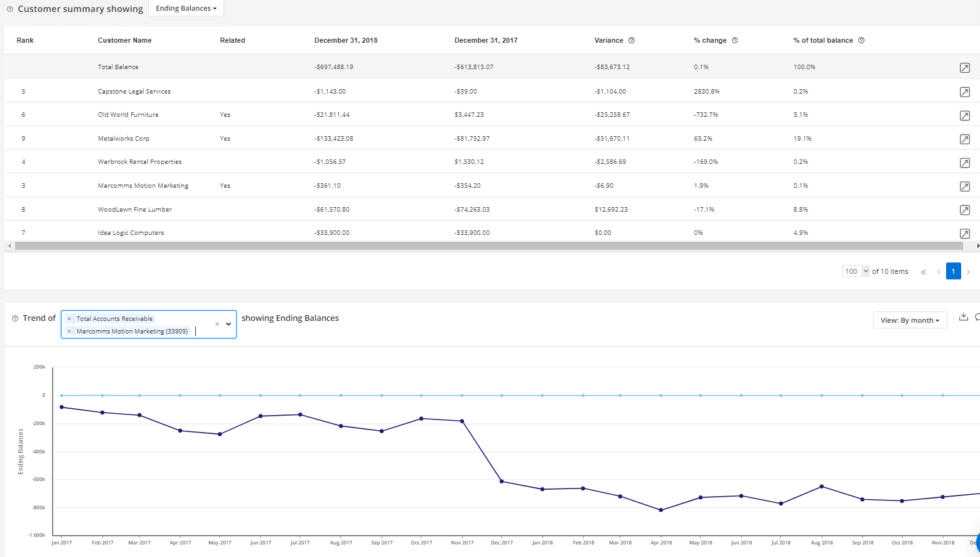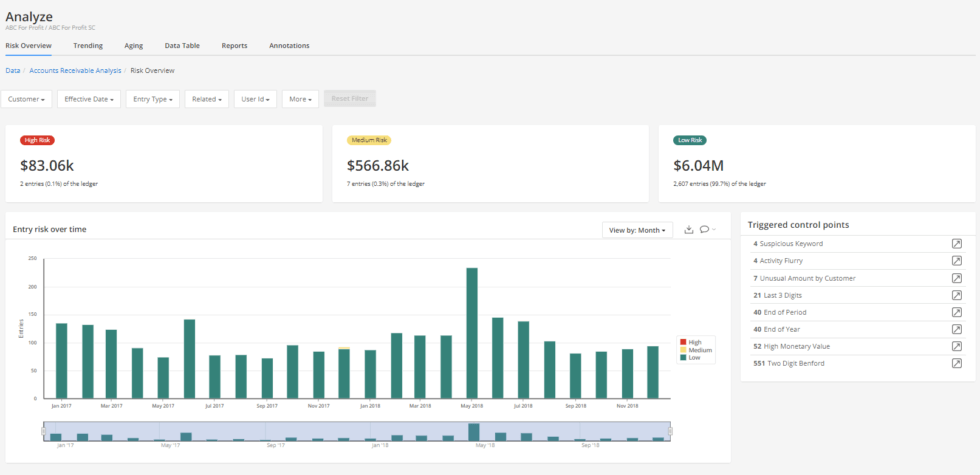Artificial intelligence (AI) and machine learning (ML) technologies can streamline traditional audit procedures for Accounts Receivable (AR) and Accounts Payable (AP) in audits of financial statements.
This blog will consider applications of AI and ML technologies using the MindBridge platform for both substantive analytical procedures as well as detailed testing of specific items.
What does the MindBridge platform do?
MindBridge Ai Auditor, in addition to core general ledger analysis, includes dedicated AR and AP modules that automatically analyze subledger data and, without any scripting, provide high-value visualizations and transaction-level analysis of data.
These capabilities allow you to leverage subledger-level insights and anomalies as critical inputs to your audit procedures and identify risks of material misstatement.
How MindBridge empowers you to perform effective and substantive analytical procedures for AR and AP
Substantive analytical procedures can be a powerful complement to traditional sampling and external confirmations. That is, provided that the auditor is comfortable with the internal controls in place regarding purchasing and sales cycles and has validated the accuracy and completeness of the subledger data.
Trends and patterns
Ai Auditor allows you to visualize how monthly AR and AP balances or net monthly activity track over multiple years at customer vendor levels, and in aggregate. Consistent patterns in these trends in the face of consistent sales and purchasing patterns (respectively) may provide audit evidence that subledger information is not materially misstated.
Vendors and customers related to the entity subject to audit are flagged directly in the summary detail as well.
Key performance indicators
Days Outstanding and Turnover Ratios are calculated at the customer and vendor level and are visualized on a monthly basis, allowing you to identify where there are periods of potential distress or deteriorating quality (e.g. is the volume of cash receipts slowing?). Similar to ending balances and activity, you are also able to compare certain customers or vendors against each other along the lines of these metrics to expose patterns of interest.
Aging
Aging at the customer and vendor level is automatically calculated and captured across respective buckets of days outstanding (0-30 days, 31-60 days, etc.). Consistent breakdown in the relative proportion of these aging buckets across multiple years of subledgers may provide audit evidence that subledger information is not materially misstated at the balance sheet date.
For certain entries that are significantly aged or stale, you’re able to drill-in to all the transactions with a particular customer or vendor and ascertain which invoice(s) are contributing to those totals and whether they could be at risk of bad debt.
How MindBridge streamlines detailed testing of AR & AP subledger data
Navigating and querying transactional level data via the Data Table in Ai Auditor is a powerful and effective way to explore and validate subledger activity.
Control Points, which are various statistical, rules-based, and machine learning tests, are run against every transaction. The results are summarized on a dashboard that supports interactions like filtering and drill-through.
Combining the query building capabilities of the Data Table with Control Point tests, you can efficiently identify relevant populations for sampling and have selections for external confirmation requests or alternative procedures testing (like subsequent receipts, for example) automatically identified on a risk-stratified basis. These selections can then be exported to Excel in one click to populate confirmation requests and/or to be included in supporting documentation.
The results of the transactional risk analysis may also be of particular interest to large entities and small businesses alike to provide insight into where there may be process improvements or gaps to consider in internal controls.
Take the first step towards AI-driven audit procedures on the AR and AP subledgers
To learn more, contact sales@mindbridge.ai.









